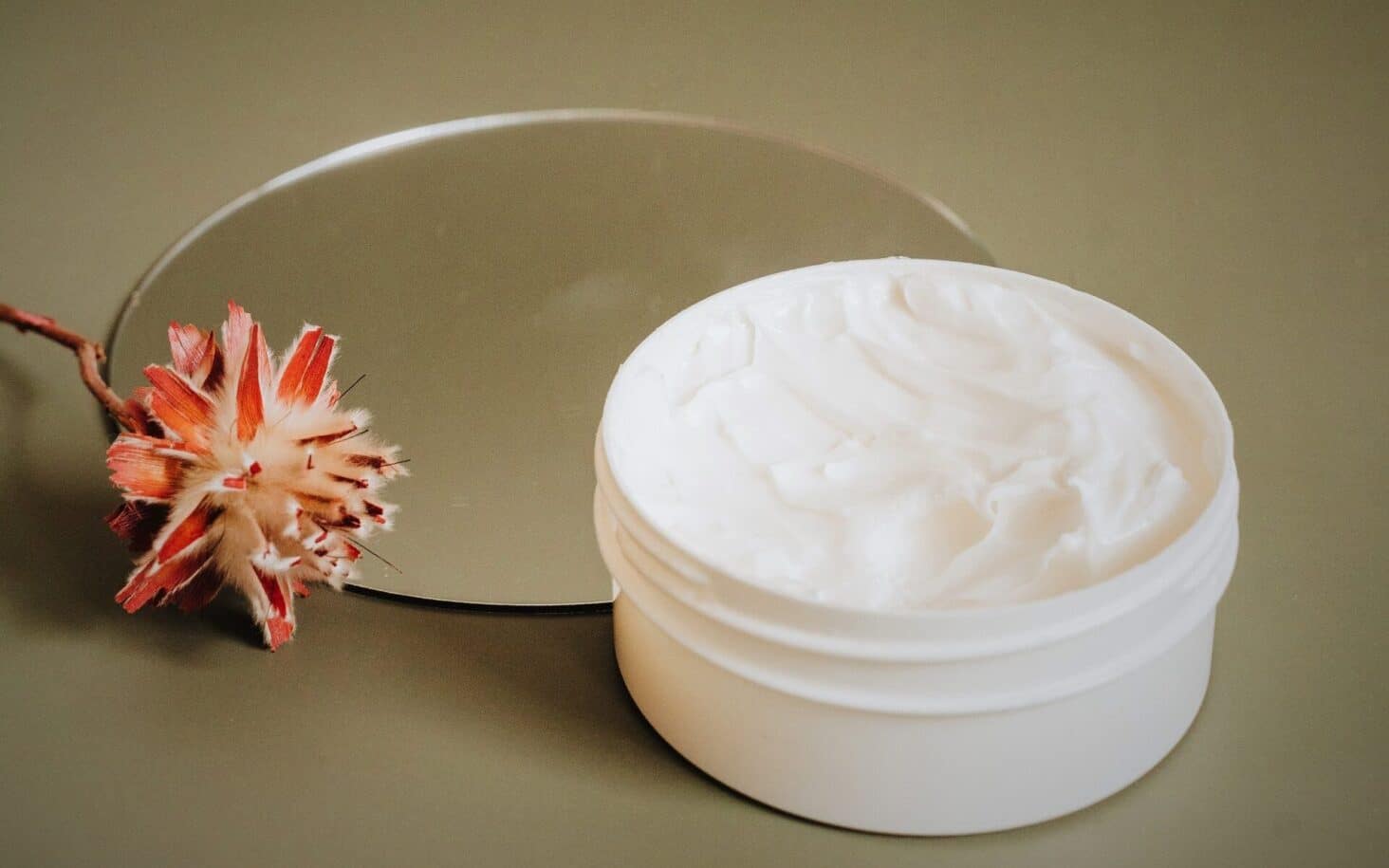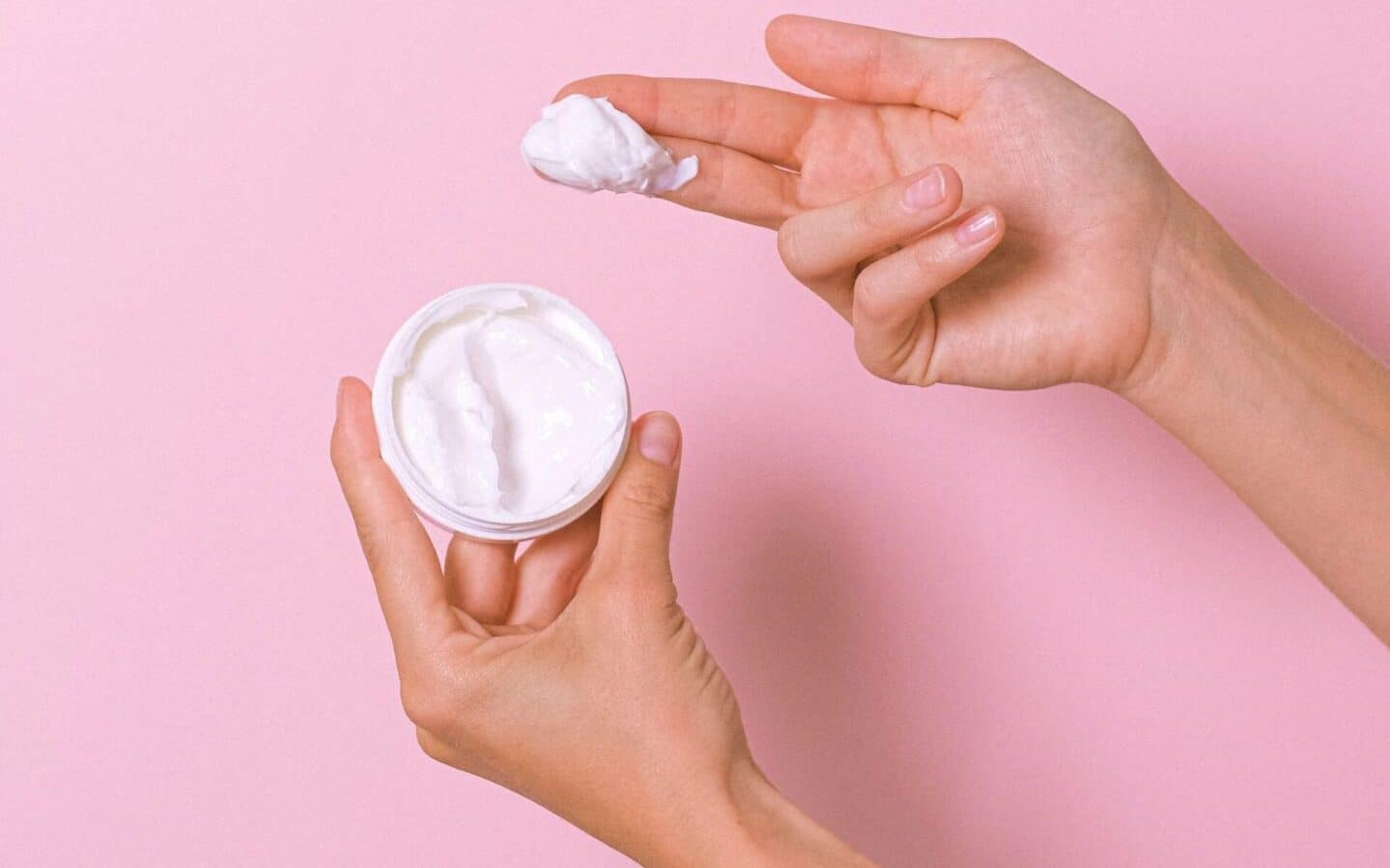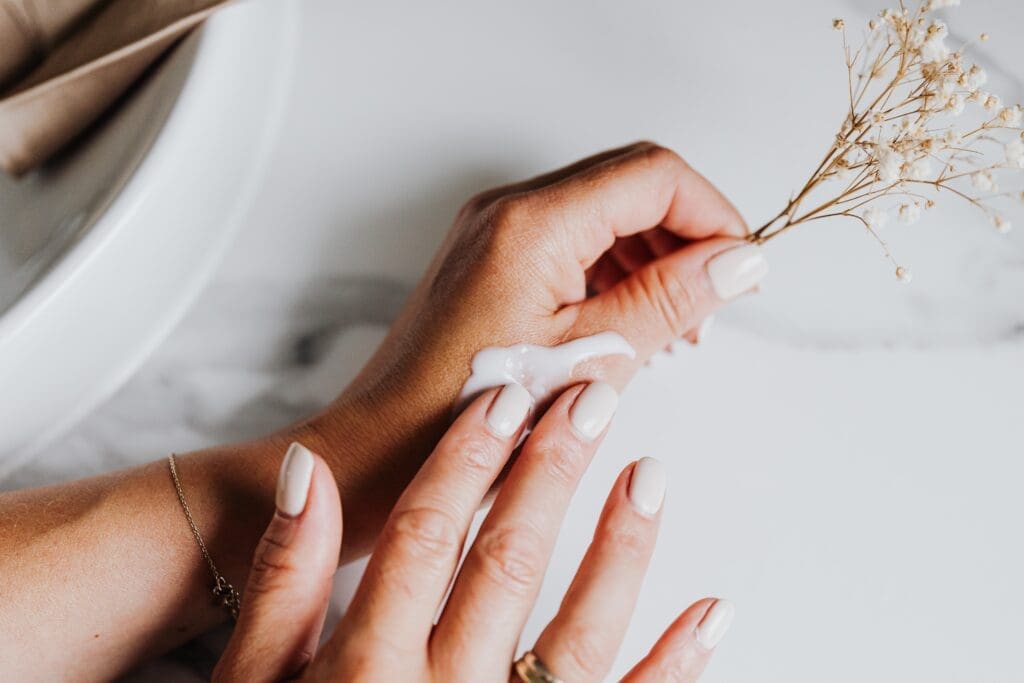What’s In Your Lotion?

Lotions come in a wide variety of types and serve various functions. Whether used for soothing cracked, dry hands or moisturizing the body after a bath or shower, lotions hydrate and soften the skin and often have a pleasing fragrance. Their texture is generally less viscous than creams or gels, making for easier application to the skin. Some lotions even contain antibiotics, antifungals, anti-aging, and anti-acne ingredients depending on their purpose. Most of us have used lotion our whole lives and never stopped to think about what’s actually in the bottle. So what is lotion made of, and what exactly are we putting on our skin?
What is lotion made of?
Most ingredients in lotion are meant to serve one of three purposes: hydrating the skin, sealing in moisture, or preserving the product. Ingredients that serve these functions include ceramides (fatty acids), glyceryl stearate, emulsifiers, or oils. Many lotions also contain fragrances which can have natural or synthetic origins.
What are the main ingredients in body lotion?
- Hydrating Ingredients: Urea, which is often used to treat conditions like calluses, eczema, psoriasis, and keratosis is a common ingredient that absorbs water and hydrates the skin. Glycerin (also known as glycerol or glycerine) is another hydration agent that is especially effective at water absorption. Other common compounds include propylene glycol, a liquid that both absorbs water and keeps products shelf-stable, and polyethylene glycol, a hydrating ingredient that is safe in small amounts but should be avoided in large quantities. Finally, sorbitol—a sugar alcohol you might recognize from its use as a low-calorie sweetener—is a common moisturizing agent that also contributes to the texture of many lotions.
- Sealing ingredients: One of the most common ingredients found in lotions is glyceryl stearate. When applied to your skin, it functions as a barrier—preserving moisture by sealing it in and preventing dryness. This moisture preservation also affects the appearance of skin, increasing softness and smoothness. Glyceryl stearate comes from natural fatty acids and is a popular ingredient due to its dual functionality and safety. Another common sealing ingredient is dimethicone. Gentle and safe to use, this natural silicone-based emollient leaves skin feeling smooth.
- Preserving and Thickening Ingredients: Xanthan gum is a popular thickening agent that also prevents oil separation. Common in food products too, it is considered safe to use. Citric acid, a natural chemical derived from citrus fruits, is also a desirable preservative, as it has antibacterial and pH-balancing properties that help lotions remain safe to use over time.

What should not be in a body lotion?
There are a number of ingredients that could be in your lotion that you don’t want to be in your lotion. Here are just a few to be aware of:
- Alcohol – simple alcohols or evaporative solvent alcohols such as ethanol, denatured alcohol, or isopropyl alcohol can cause excessive dryness, and in turn, increase oil production in the skin—especially problematic if your skin is inflamed or prone to acne. On the other hand, don’t be confused by the term “alcohol,” as there are beneficial alcohols – particularly fatty alcohols – which help draw in and hold moisture. You’ll often see these listed as cetyl, stearyl, cetearyl, and propylene glycol…just to name a few.
- Phthalates show up in lotions and other cosmetic products as binding agents. Unfortunately, they’ve also been linked to problems of the neurological, respiratory, behavioral, and reproductive systems. It’s important to avoid products that contain phthalates.
- Fragrances can be harmful depending on the product and the person using them. If you’re prone to allergies, it’s best to avoid scented products. The vague term “fragrance,” listed on a label could also potentially refer to toxic ingredients like phthalates. While the term “fragrance” may be included on some of our product labels, Taboodoir only uses essential oils and essential oil blends (the essential oil blends are listed as “fragrance”). Rest assured, no toxic ingredients – including phthalates – are used in any of our products.
- Parabens are synthetic compounds used as a preservative in products ranging from pharmaceuticals, foods, toothpastes, cosmetics, and yes, lotions. Parabens have caught much adverse attention among consumers, and although these preservatives are highly effective in very minimal quantities, the main concern is the cumulative exposure to the chemicals from several different products. Albeit these are FDA-approved preservatives, suppliers have focused on manufacturing paraben-free alternatives that are just as effective in preventing microbial growth in personal care products.
What should be in a body lotion?
Ideally, a lotion should contain ingredients that help it serve its purpose of healing and hydrating the skin while being safe to use (and hopefully smelling nice too!). This doesn’t necessarily mean that there should be no preservatives in a product—in some instances, preservatives are necessary to prevent harmful contamination and microbial growth.
In these cases, Taboodoir uses broad-spectrum preservatives that are paraben-free and formaldehyde-free and provide optimized protection against potential bacteria, mold, and yeast. We also use natural ingredients that offer proven benefits to the skin—ingredients like grapefruit and rosemary oils (that have antimicrobial properties) and Shea butter (that is known for its moisturizing and antioxidant effects).

Hopefully this guide helps you understand a bit more about those unrecognizable ingredients in your lotion. And as always, if you have a question about an ingredient in any of our Taboodoir products, don’t hesitate to reach out and ask!
What’s In Your Lotion?

Lotions come in a wide variety of types and serve various functions. Whether used for soothing cracked, dry hands or moisturizing the body after a bath or shower, lotions hydrate and soften the skin and often have a pleasing fragrance. Their texture is generally less viscous than creams or gels, making for easier application to the skin. Some lotions even contain antibiotics, antifungals, anti-aging, and anti-acne ingredients depending on their purpose. Most of us have used lotion our whole lives and never stopped to think about what’s actually in the bottle. So what is lotion made of, and what exactly are we putting on our skin?
What is lotion made of?
Most ingredients in lotion are meant to serve one of three purposes: hydrating the skin, sealing in moisture, or preserving the product. Ingredients that serve these functions include ceramides (fatty acids), glyceryl stearate, emulsifiers, or oils. Many lotions also contain fragrances which can have natural or synthetic origins.
What are the main ingredients in body lotion?
- Hydrating Ingredients: Urea, which is often used to treat conditions like calluses, eczema, psoriasis, and keratosis is a common ingredient that absorbs water and hydrates the skin. Glycerin (also known as glycerol or glycerine) is another hydration agent that is especially effective at water absorption. Other common compounds include propylene glycol, a liquid that both absorbs water and keeps products shelf-stable, and polyethylene glycol, a hydrating ingredient that is safe in small amounts but should be avoided in large quantities. Finally, sorbitol—a sugar alcohol you might recognize from its use as a low-calorie sweetener—is a common moisturizing agent that also contributes to the texture of many lotions.
- Sealing ingredients: One of the most common ingredients found in lotions is glyceryl stearate. When applied to your skin, it functions as a barrier—preserving moisture by sealing it in and preventing dryness. This moisture preservation also affects the appearance of skin, increasing softness and smoothness. Glyceryl stearate comes from natural fatty acids and is a popular ingredient due to its dual functionality and safety. Another common sealing ingredient is dimethicone. Gentle and safe to use, this natural silicone-based emollient leaves skin feeling smooth.
- Preserving and Thickening Ingredients: Xanthan gum is a popular thickening agent that also prevents oil separation. Common in food products too, it is considered safe to use. Citric acid, a natural chemical derived from citrus fruits, is also a desirable preservative, as it has antibacterial and pH-balancing properties that help lotions remain safe to use over time.

What should not be in a body lotion?
There are a number of ingredients that could be in your lotion that you don’t want to be in your lotion. Here are just a few to be aware of:
- Alcohol – simple alcohols or evaporative solvent alcohols such as ethanol, denatured alcohol, or isopropyl alcohol can cause excessive dryness, and in turn, increase oil production in the skin—especially problematic if your skin is inflamed or prone to acne. On the other hand, don’t be confused by the term “alcohol,” as there are beneficial alcohols – particularly fatty alcohols – which help draw in and hold moisture. You’ll often see these listed as cetyl, stearyl, cetearyl, and propylene glycol…just to name a few.
- Phthalates show up in lotions and other cosmetic products as binding agents. Unfortunately, they’ve also been linked to problems of the neurological, respiratory, behavioral, and reproductive systems. It’s important to avoid products that contain phthalates.
- Fragrances can be harmful depending on the product and the person using them. If you’re prone to allergies, it’s best to avoid scented products. The vague term “fragrance,” listed on a label could also potentially refer to toxic ingredients like phthalates. While the term “fragrance” may be included on some of our product labels, Taboodoir only uses essential oils and essential oil blends (the essential oil blends are listed as “fragrance”). Rest assured, no toxic ingredients – including phthalates – are used in any of our products.
- Parabens are synthetic compounds used as a preservative in products ranging from pharmaceuticals, foods, toothpastes, cosmetics, and yes, lotions. Parabens have caught much adverse attention among consumers, and although these preservatives are highly effective in very minimal quantities, the main concern is the cumulative exposure to the chemicals from several different products. Albeit these are FDA-approved preservatives, suppliers have focused on manufacturing paraben-free alternatives that are just as effective in preventing microbial growth in personal care products.
What should be in a body lotion?
Ideally, a lotion should contain ingredients that help it serve its purpose of healing and hydrating the skin while being safe to use (and hopefully smelling nice too!). This doesn’t necessarily mean that there should be no preservatives in a product—in some instances, preservatives are necessary to prevent harmful contamination and microbial growth.
In these cases, Taboodoir uses broad-spectrum preservatives that are paraben-free and formaldehyde-free and provide optimized protection against potential bacteria, mold, and yeast. We also use natural ingredients that offer proven benefits to the skin—ingredients like grapefruit and rosemary oils (that have antimicrobial properties) and Shea butter (that is known for its moisturizing and antioxidant effects).

Hopefully this guide helps you understand a bit more about those unrecognizable ingredients in your lotion. And as always, if you have a question about an ingredient in any of our Taboodoir products, don’t hesitate to reach out and ask!
